|
Radio Meteor detection and imaging |
If you cannot see the full index shown on the left edge of your screen, please go to my main page at
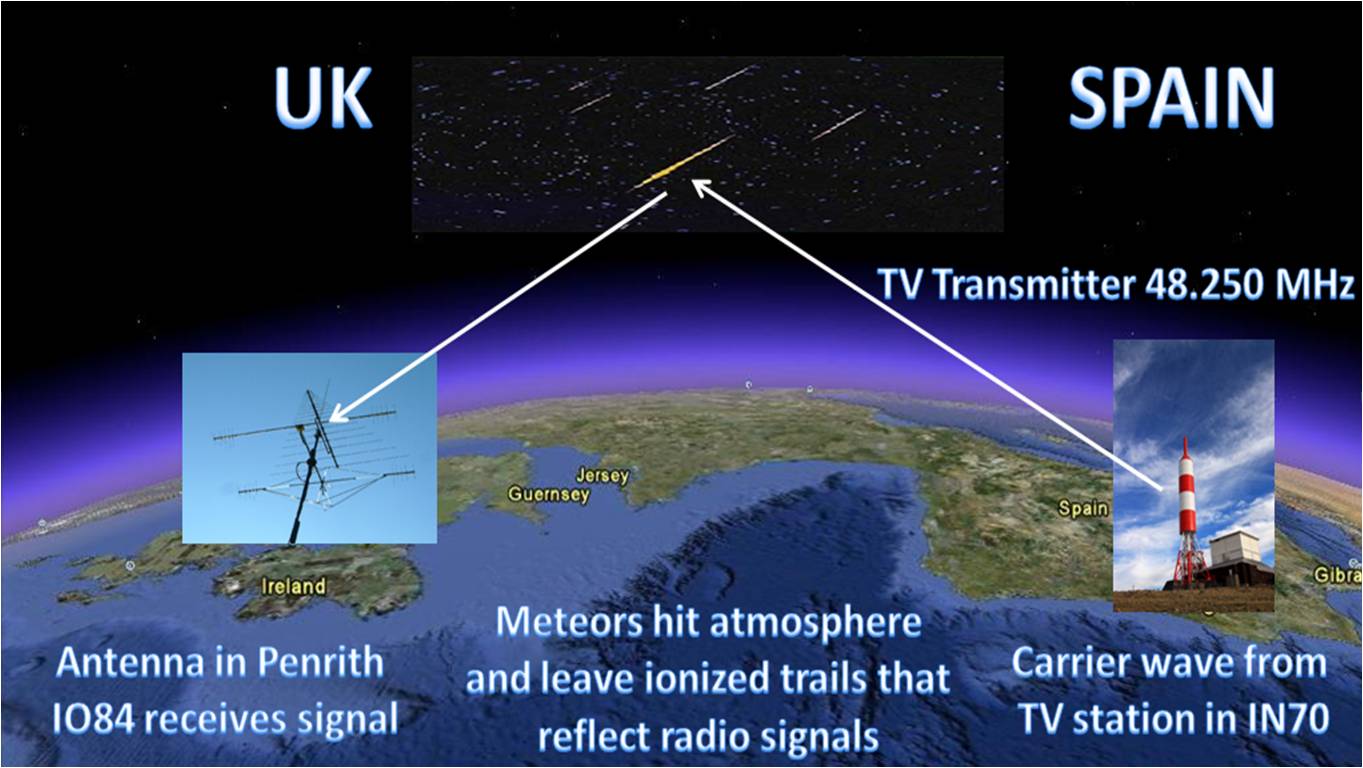
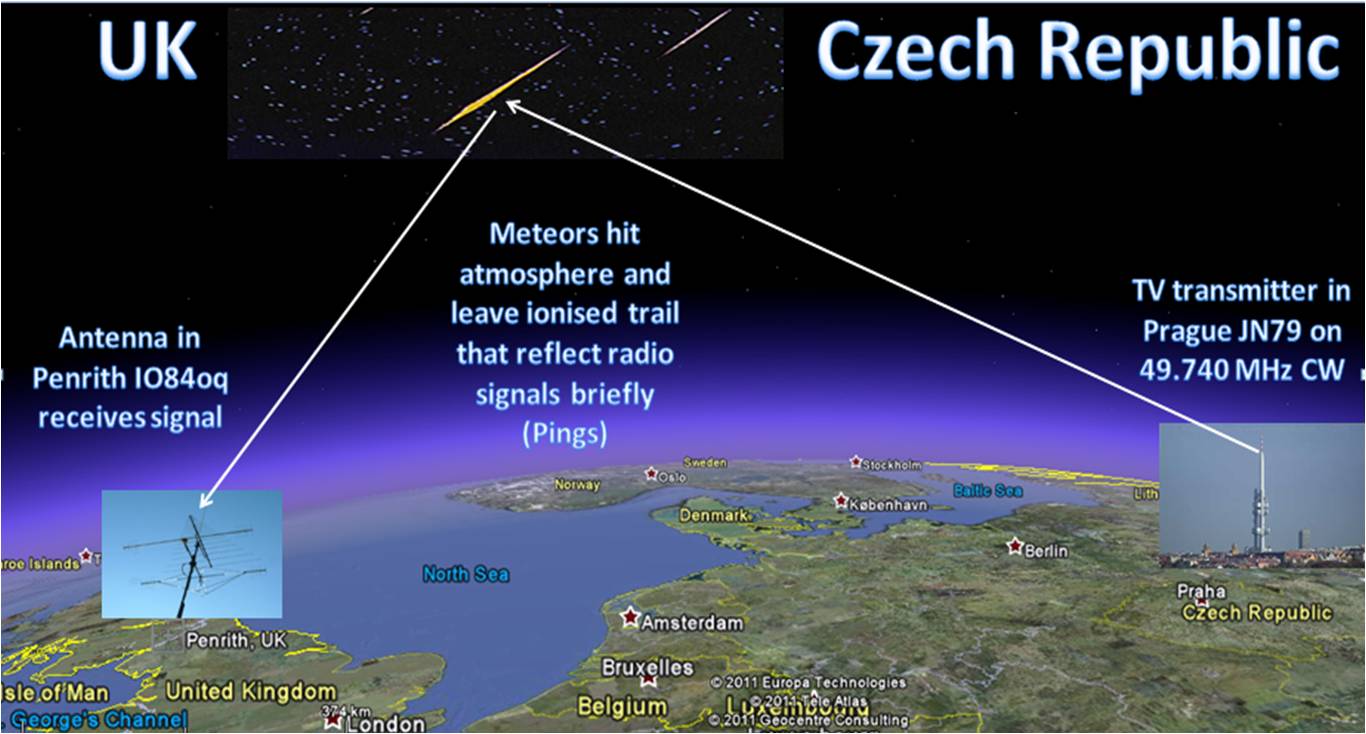
All analogue TV stations in the Czech Republic closes down on 30th June 2012. Portugal too ceased on 26th April 2012. For a list of analogue TV closures by Country please follow this link for Digital Television Transitions
|
Meteor Showers |
|||
|
Meteor Showers |
Active
Period |
Approximate
activity
maximum |
Peak recorded Radio reflection hourly rate |
|
Quadrantids |
Jan 01-Jan 05 |
Jan 04 |
522 (2009) |
|
Delta Leonids |
Feb 15-Mar 19 |
Feb 25 |
353 (2010) |
|
Virginids |
Jan 25-Apr 15 |
Mar 24 |
299 (2009) |
|
Lyrids |
Apr 16-Apr 25 |
Apr 22 |
403 (2010) |
|
eta-Aquarids |
Apr 19-May 28 |
May 05 |
488 (2005) |
|
Comet 209P TBC?? |
May 24-May 31 | May 24/31 | 540 (2007) |
| Pegasids | Jul 07-Jul 13 |
Jul 10 |
495 (2007) |
|
Southern
delta-Aquarids |
Jul 12-Aug 19 |
Jul 28 |
|
|
Perseids |
Jul 17-Aug 24 |
Aug 12 |
527 (2009) |
|
a-Aurigids |
Aug 25-Sep 08 |
Aug 26 |
|
|
Delta-Aurigids |
Sep 05-Oct 10 |
|
298 (2007) |
|
Piscids |
Sep 01-Sep 30 |
Sep 20 |
396 (2009) |
|
Orionids |
Oct 02-Nov 07 |
Oct
14 |
471 (2009) |
|
Nov 14-Nov 21 |
Nov
19 |
700+ (2002) |
|
|
Puppid-Velids |
Dec 01-Dec 15 |
Dec
07 |
306 (2005) |
|
Geminids |
Dec 07-Dec 17 |
Dec
14 |
|
|
Ursids |
Dec 17-Dec 26 |
Dec 22 |
243 (2007) |
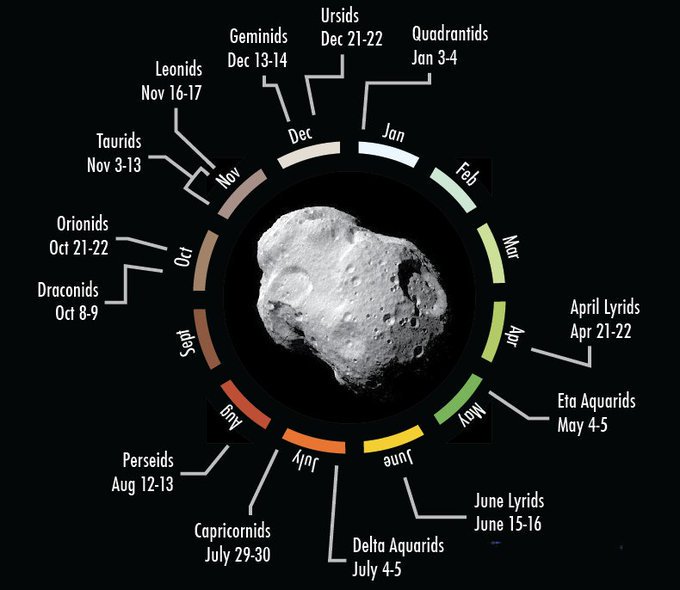
|
Radio Meteor Scatter detection sources for Northern England |
|||||
| Carrier Frequency CW (MHz) or USB if shown | Power | Location | Distance from IO84 | Remarks | Results |
| 32.550 | 12 kW | JP89 Norway | 1842 km |
SkiYMET, Andenes Meteor Radar, Institute Atmospheric Physics, over ideal 1500 km distance & good power. At solar maximum frequencies between 30-35 MHz can be negatively impacted for MS working. N.B. Operating in pulsed mode, not CW carrier so unlikely to be of use for radio detection(Thanks Toralf DJ8MS for info)
|
Tested May 2012, nil heard |
| 32.550 | 12 kW | JO64 Germany | 1017 km |
Juliusruh Meteor Radar, Institute Atmospheric Physics, good distance & power. At solar maximum frequencies between 30-35 MHz can be negatively impacted for MS working. N.B. Operating in pulsed mode, not CW carrier so unlikely to be of use for radio detection (Thanks Toralf DJ8MS for info) . |
Tested May 2012, nil heard |
| 36.200 | 12 kW? | JO61 Germany | 1110 km |
Collm Meteor Radar, near Leipzig, good distance & power. N.B. Operating in pulsed mode, not CW carrier so unlikely to be of use for radio detection (Thanks Toralf DJ8MS for info) . |
|
| 39.025-39.175 | 100 W | UK Locations unknown | ? km |
UK Meteor Burst Communications (MBC) 7 x 25 kHz channels. Full locations unknown, one company operates master station at Newbury, Berkshire. May be Mobile Meteor Burst Stations (MMBS) and only transmit once per hour. See reference document. European harmonised Meteor burst frequency allocation is 39-39.2 MHz.
|
|
| 46.400 | 500 W | UK IO92ot Leicestershire | 246 km |
UK Meteor Burst Communications (MBC) All are being phased out as legacy systems, some are already closed down in 2024, this system remains on until contract ends. Below recommended minimum 300km distance . |
Tested September 2012, nil heard |
|
|
|
|
|
NERC MST Weather Radar Facility. Below recommended minimum 300km distance. N.B. Operating in pulsed mode, not CW carrier so unlikely to be of use for radio detection . |
Tested May & September 2012, nil heard. Closed down in 2024 |
| 46.950 | 100 W | ? | ? km |
UK Meteor Burst Communications (MBC) Return frequency for main 46.975 Transmitter . |
Tested September 2012, two extremely weak pings and missed Fireball over UK on 21.09.2012 completely! |
| 46.975 | 500 W | UK Bacton, Norfolk JO02RU | 345 km |
UK Meteor Burst Communications (MBC) . |
Tested September 2012, nil heard |
|
|
|
|
|
TV carrier Spain, closed down in 2010. This had been the strongest Band 1 TV signal observed here from Europe
|
Closed down in 2010 |
|
|
|
|
|
|
Tested March 2012, nil heard. Closed by 2018 |
|
|
|
|
|
|
Closed down June 2012 |
|
|
|
|
|
|
Not workable too far away. Closed by 2018 |
|
49.74920 |
149 kW | KP50 Russia | 2090 km |
TV Carrier St.Petersburg, Russia R1, over ideal 1500 km distance
|
Testing in September 2012 & May 2015 has found some Meteor pings. |
| 49.749980 | 25 kW | K033 Belarus | 1934 km |
TV Carrier Minsk, Belarus R1, over ideal 1500 km distance
|
Signal on this frequency heard via Es on 30.04.2012. Testing in September 2012 has found some Meteor pings. |
|
|
|
|
|
|
Closed by 2018 |
|
|
|
|
|
|
Closed by 2018 |
|
|
|
|
|
|
Closed down early in November 2011. Thanks Martin G4FUI for the update |
|
49.96917 USB |
150 W | JO20 Belgium | 702 km |
BRAMS Meteor Beacon, Balise Dourbes, Belgium dedicated MS beacon, but low power, very good distance
|
Very few weak pings detected so far |
|
49.98918 USB |
50 W | JO10 Belgium | 607 km |
VVS OT1KZG Meteor Beacon, Ypres, Belgium dedicated MS beacon, but low power, very good distance
|
Some frequent weak pings detected. Stronger and more frequent than Balise Dourbes |
| 50.40720 USB | 75 W | IO93 England | 205 km | GB3MBA Meteor Beacon https://www.meteornews.net/2022/10/26/uk-radio-meteor-beacon-project/ | Rather too close for me |
| 53.500 | 12 kW | JO64 Germany | 1017 km |
Juliusruh Meteor Radar, Institute Atmospheric Physics, good distance & power. N.B. Operating in pulsed mode, not CW carrier so unlikely to be of use for radio detection (Thanks Toralf DJ8MS for info)
|
Tested May 2012, nil heard |
|
53.500
|
4.5-90 kW | JO54 Germany | 889 km |
OSWIN VHF Radar, good distance
and power varies. N.B. Has not been operating in Meteor Scatter mode since 2009 (Thanks Toralf DJ8MS for info) |
|
|
|
|
|
|
|
Not workable too far away |
|
53.500
|
1.8-36 kW | JP88 Norway | 1842 km |
ALWIN VHF Wind Radar, good
distance and power varies. N.B. Operating in pulsed mode, not CW carrier so unlikely to be of use for radio detection Can sometimes be used to measure Meteor activity when the site operator wishes, but not main priority. |
Tested May 2012, nil heard |
|
|
|
|
|
|
Closed down 2015 |
|
|
|
|
|
|
Closed down 4th May 2012 |
|
|
|
|
|
|
Closed by 2018 |
|
|
|
|
|
|
Closed down |
|
|
|
|
|
N.B. These two Icelandic TV stations frequencies are shown inverted depending on which source you view, so they could be either way round |
Closed 2015 |
|
|
|
|
|
N.B. These two Icelandic TV stations frequencies are shown inverted depending on which source you view, so they could be either way round |
Closed 2015 |
| 87.600 WFM | 100 kW | Germany | 800 km |
Several BC FM Radio stations in Germany at ideal distance and high ERP
|
TBC 2023 |
|
143.050 CW 143.04920 USB |
<767 kW | JN27SI France |
(1000 km)
1250 km |
GRAVES Military Space Radar system, believed excellent power, fairly good distance, but high frequency with far fewer reflections detectable compared to 50 MHz. Note distance is not to transmitter site itself but to area of Southern France 250 km further South where Ionosphere is illuminated by the Radar at 100 km altitude and reflections detected. However, in theory this is detection via Backscatter and ideally Forward scatter is much preferred for MS work.
|
Possible few weak reflections detected
|
I was using in 2015
49.74920 MHz USB St.Petersburg TV carrier, KP50, Russia
as my primary Meteor Spectrogram reception frequency, however results were poorer than before when I could use the 55.250 MHz signal from the TV transmitter in Portugal, due to lower ERP and greater distance away.
My alternative frequency in 2015 was
49.98918 MHz USB OT1KZG Meteor Beacon, JO10, Belgium
I cannot understand why the Skalafell TV transmitter on 62 MHz in Iceland was not the very strongest signal here in Europe in 2012 as it is closer to me than the strongest closed down TV stations in Spain or Portugal were and has higher output power of 300 kW. The only thing I can think of is that the 48 MHz and 55 MHz frequencies the other TV stations used respectively are lower and better frequencies for MS and the amateur radios used have better receiver design characteristics for those frequencies too.
2015
Looks like the Iceland TV transmitters may have closed down since I last looked in 2013, which only leaves Eastern European TV transmitters in or near Russia left now in 2015 as shown on the map below
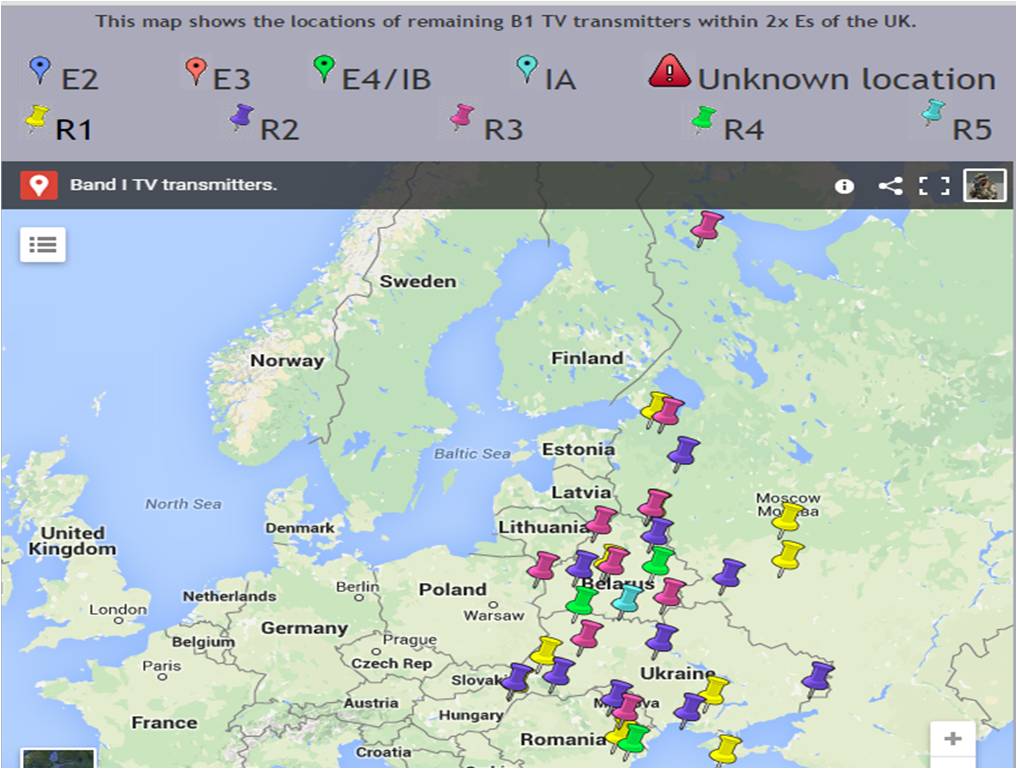
|
GRAVES French Military Space Radar System |
143.050 MHz CW
This is the carrier frequency of the French GRAVES space surveillance radar system and will provide pings from both meteors as well as satellites! Maidenhead Locator Square JN27SI near the City of Dijon and the border with Switzerland. (Red dot on map indicates transmitter location on former airfield)

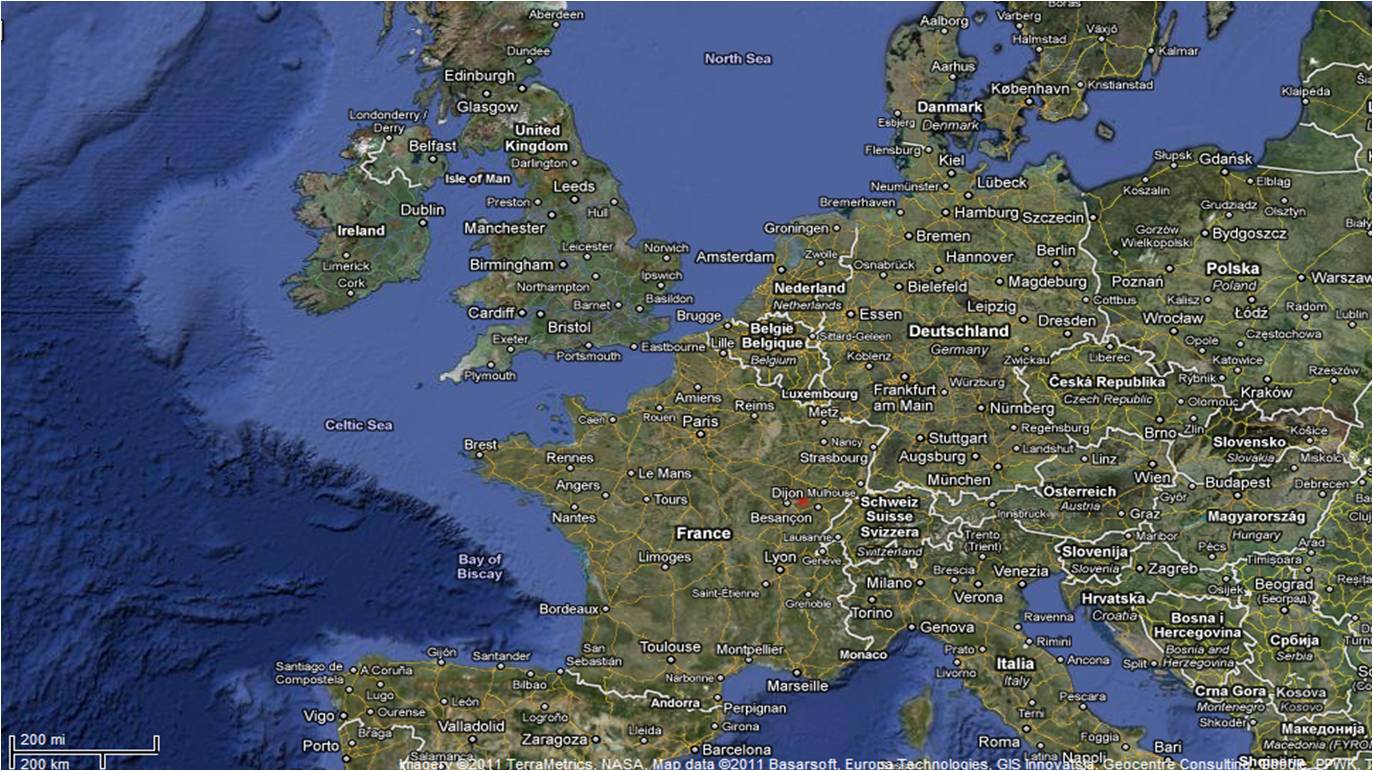
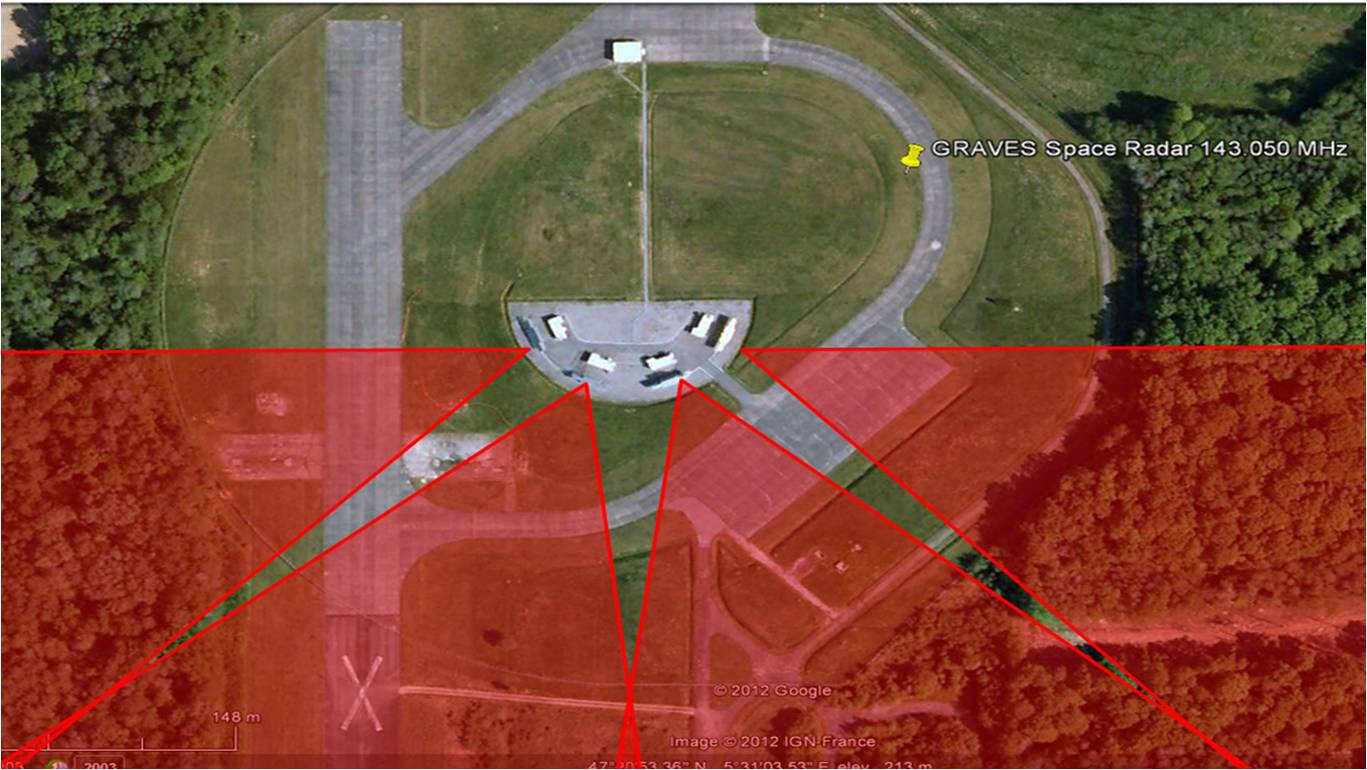
There are 4 Phased Array antennas on 143.050 MHz CW situated on a disused Airfield. The four transmitted beam lobes are designed to overlap and cover a 180 degree arc of Sky, at an elevation of 25 degrees, in a Southerly direction towards the Mediterranean Sea.
GRAVES Space Radar beam geometry
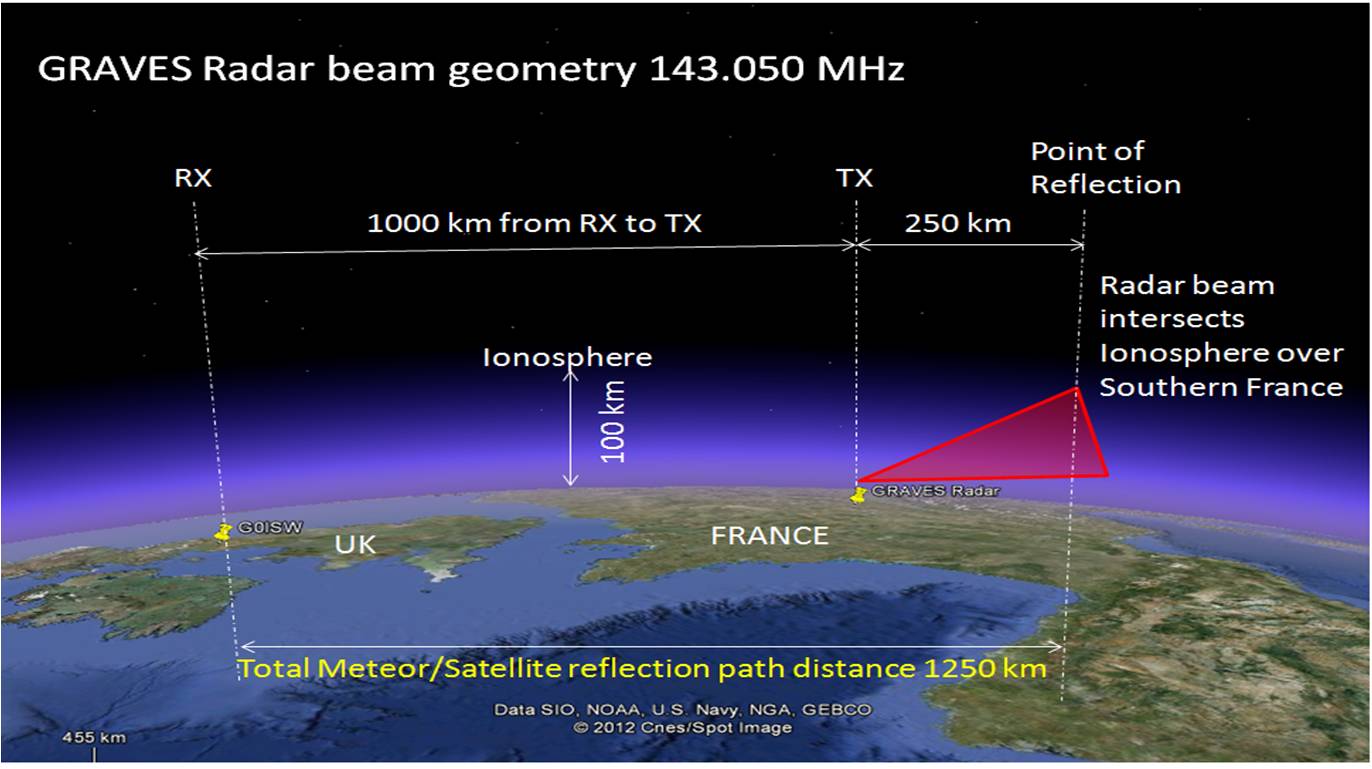
Preliminary experimental results using only an indoor 144MHz 1/2 wave colinear on 143.050 MHz CW have produced what I think may be Meteor Scatter reflections or the ping could could be from a satellite! In the screen grab below there is a distinct vertical ping shown in a bright yellow colour just before 0625 UTC on 24th March 2012.
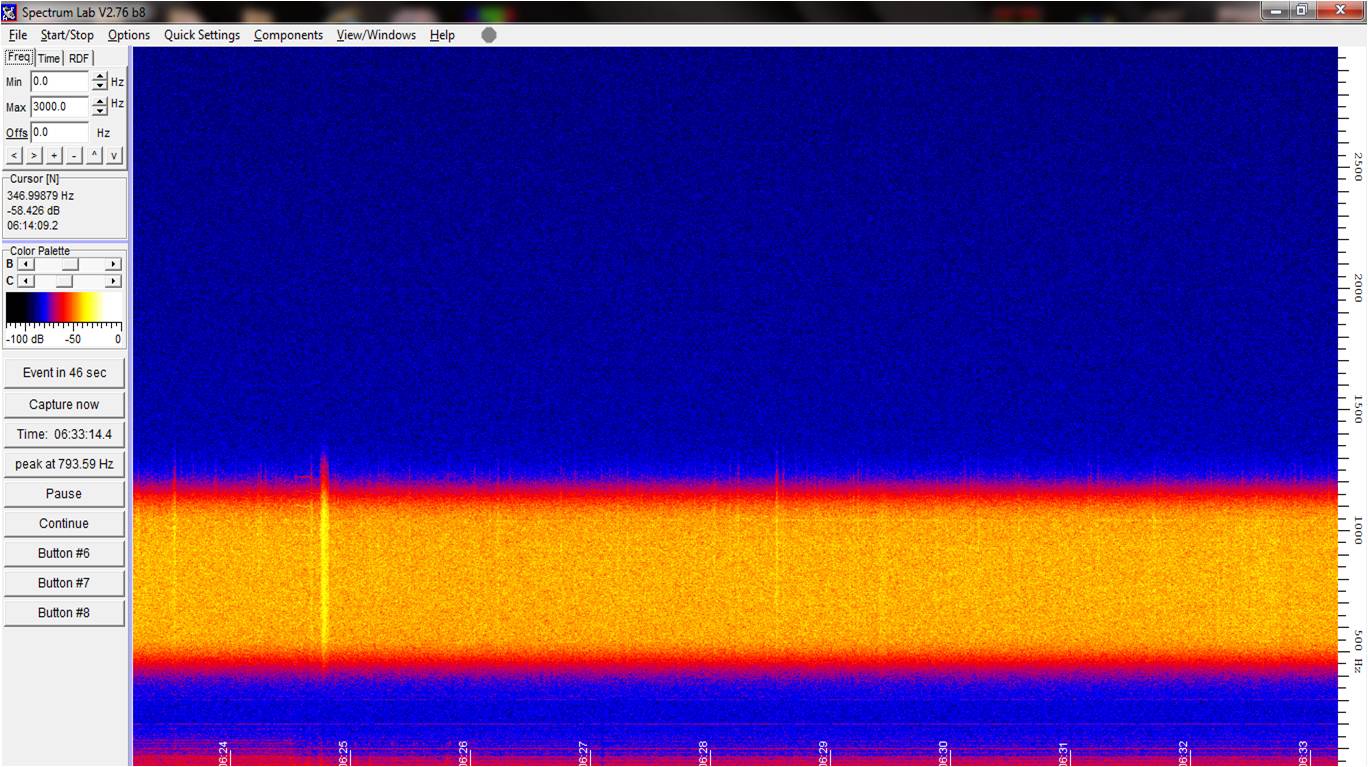
I was also experimenting in 2012 to see if some of the dedicated Institute for Atmospheric Physics (IAP) high power VHF transmitters for Meteor Scatter detection are audible here in the North of the UK. There are stations located in Andenes, Norway on 32.550 MHz running 12 kW and another station in Juliusruh in Northern Germany on 32.550 and 53.5 MHz at 12kW. However all my attempts to use these sources have failed and I have been advised that as they are 'pulsed' signals and not CW they may not be at all suitable.
|
Radio Astronomy imaging |
Here below are my first attempts at automatically uploading my latest captured Radio detected Meteor Scatter images. Inspiration mostly drawn from Andy G7IZU and his excellent web guide on how to do this. I am using DL4YHF SpectrumLab software to capture the images and AutoFTP Pro to send them to this website automatically every 10 minutes whilst the system is active. Technically I suppose this is Radio Astronomy. If there are no meteors then this image will be mostly blank.
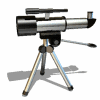

|
|
|
|
Meteor Pings captured in the above image (if detected) should also show up on the live Plotter image below, where they exceed -50 dB signal level as high green coloured peaks and should correspond with the 3D image below that.
|
|
|
|
|
Example Meteor Plotter image |
|
|
|
|
|
|
And if there is something 'special' to see then, in theory, an Alert image should be shown below! This is still very much in test mode and is currently set to activate if a Meteor ping is stronger than -50dB..
|
|
|
|
|
|
My hourly data is recorded, for the numbers of meteors detected, and sent automatically to the Radio Meteor Observatory's Online (RMOB) website. The chart below displays this data with artificial colours Red for the highest number of counts and blue for the lowest number. In general terms the early mornings should display the highest numbers of random meteors, the exception being a meteor shower peak which can occur at other times of day.
Observations of many Radio Meteor Spectrograms by myself, and others, suggest that the captured Spectrogram images appear to fall into one of approximately 15 categories, which are described and explained below. For consistency, all example captured images are at the highest FFT resolution my system will allow and are edited into a cropped size of 156 x 156 pixels (unless that will not allow the full trail to be seen).
|
Categorisation of Radio Meteor Doppler Spectrograms
"Spectrum is Green" |
|||||||
|
|
Small Dots May be caused by a very small micro meteor, which probably did not penetrate very far into the atmosphere. The ionisation trail was very short duration (milliseconds). This is the most common trace seen here. May be 'under dense' and not too bright in false colour, or 'over dense' and bright in false colour. Frequency: Very common, in excess of 100+ seen in two weeks. Several per hour. |
Distinguishing Characteristics: Dot-like trace, no sign of Doppler shift, no persistent trail. |
|||||
|
|
Horizontal Trail Probably a slightly larger meteor able to produce sufficient ionisation for its trail to persist for a few seconds or up to several minutes Frequency: Common, around 20+ seen in two weeks, a few per day. |
Distinguishing Characteristics: Horizontal line trace for a few seconds or up to several minutes, little or no sign of Doppler shift. |
|||||
|
|
Tadpole Bright head with tail. Probably due to a medium sized meteor, exhibiting a 'Meteor Head Echo' caused by a ball of plasma surrounding the meteor and leaving behind an ionised trail lasting a few seconds. Frequency: Fairly common, I have seen 10+ in two weeks. |
Distinguishing Characteristics: Single bright head with short horizontal line trace. No sign of Doppler shift. |
|||||
|
|
Vertical trail Probably a rapidly decelerating meteor (the vertical pattern indicates significant Doppler shift), but it did not explode immediately. The object penetrated some way into the atmosphere before it was completely vaporised. No horizontal spread means that again the plasma trail lasted only a brief moment. Frequency: Rare, only 2 seen in two weeks. |
Distinguishing Characteristics: Single vertical line trace, significant signs of Doppler shift. No evidence of a persistent trail. |
|||||
|
|
'L'-shaped Brighter at the bottom and lasting several seconds. Probably a penetrating meteor which then exploded, the vertical part of the trace is the deceleration, the horizontal part the plasma fireball after it exploded and resulting in the extended trace. Frequency: Rare, only 4 seen in two weeks. |
Distinguishing Characteristics: A combination of vertical trace (beginning) followed by a single persistent horizontal trail. |
|||||
|
|
'C' shaped Curved line lasting several seconds. A meteor of sufficient size to leave an ionised trail at more than one level of the atmosphere before vaporisation. Frequency: Fairly common, 7 seen in two weeks. |
Distinguishing Characteristics: 'C'-shaped trace, signs of Doppler shift and two trails. |
|||||
|
|
'E' shaped Looks like a curved letter 'E' where each horizontal plasma trail represents differing layers of high altitude winds. Similar to the previous example but more deeply penetrating. Frequency: I have seen 5 of these in two weeks, always the letter E and not more! |
Distinguishing Characteristics: A continuous 'E'-shaped curve |
|||||
|
|
Complex - Curved Long complex curves. Similar to the previous examples but even more deeply penetrating into the atmosphere. Frequency: Fairly rare, I have seen 8 of these in two weeks. |
Distinguishing Characteristics: A continuous series of curves, greater than a single 'E'. |
|||||
|
|
Complex - Curved &
Linear trails Lasting several seconds or longer. A mixture of curved and line shapes (this example looks like a Bow and Arrow). Possibly a large meteor which progressively vaporises, the distinct plasma layers may be due to differing winds in the atmosphere. Frequency: Fairly Rare, only 4 seen in two weeks. |
Distinguishing Characteristics: Complex multi-layered trace exhibiting both curved and line traces. |
|||||
|
|
Complex - Linear
trails Lasting several seconds. Multiple separate horizontal line traces of similar length. Possibly a large meteor which progressively vaporises, the distinct plasma layers may be due to differing winds in the atmosphere. Frequency: Fairly Rare, only 5 seen in two weeks. |
Distinguishing Characteristics: Complex multi-layered trace exhibiting several line traces of similar length. |
|||||
|
|
Fireball Lasting many seconds or minutes. Huge flaming type image of significant very large sized meteor. Frequency: Rare, 4 seen in two weeks. (I did visually see one c.1980 it was the most amazing space sight I have ever seen, brought my car and the one in front to a complete halt as us drivers watched the vivid green and purple flames from a huge Meteor for what seemed like a minute. Reported seen by others in local newspaper too, but reported different colours to my own observation) |
Distinguishing Characteristics: A visually stunning Spectrogram image! |
|||||
|
|
Aircraft Not Meteors at all, but reflected traces images caught from Aircraft passing between the transmitter site and Receiver site. Many minutes duration. |
Distinguishing Characteristics: Aircraft traces always start at a higher frequency, with significant Doppler shift moving to a lower frequency over time. Often look like a mirrored letter 'S' (Direction of trace Top left to Bottom right) the middle of the S being on the Transmitter frequency axis. |
|||||
.jpg) |
Diagonal
straight trail/Satellites Not believed to be a meteor, but some form of unknown anomaly. One theory suggests it is reflection from Satellites. Frequency: Rare, only 4 seen in two weeks.
|
Distinguishing Characteristics: Single diagonal straight line trace starting at highest frequency and over time moving to lower frequency very steeply, exhibiting Doppler shift. One theory suggests it is reflection from Satellites. Not like an aircraft 'S' shape Doppler trail. |
|||||
|
|
Radio noise
anomaly Not Meteors at all, but Radio noise anomalies. Many minutes duration. |
Distinguishing Characteristics: Radio noise anomalies often start at a low frequency and rise over time (Doppler shifted signals in comparison always start high and move lower) Can be horizontal straight lines too. Often caused by lighting, computers, television, thermostats etc. |
|||||
|
|
Sporadic Es Not Meteors at all, but another form of Summer time radio propagation. Many minutes or hours duration. |
Distinguishing
Characteristics: Constant horizontal signal trace at high signal strength levels. In the Northern Hemisphere occurs mostly from late April until the end of August. Particularly strong in June. |
|||||
|
Meteor Spectrogram Gallery 55.250 MHz March - May 2012 |
|||||||
|
|
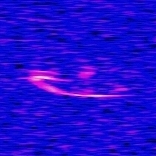 |
.jpg) |
.jpg) |
.jpg) |
.jpg) |
.jpg) |
.jpg) |
|
|
.jpg) |
.jpg) |
.jpg) |
 |
|||
|
|
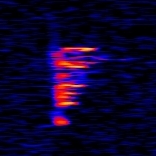 |
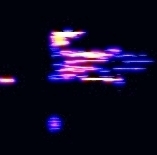 |
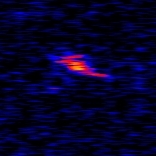 |
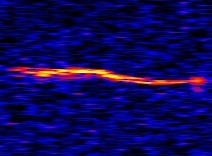 |
.jpg) |
 |
|
|
|
.jpg) |
.jpg) |
.jpg) |
.jpg) |
.jpg) |
.jpg) |
.jpg) |
|
|
.jpg) |
.jpg) |
.jpg) |
.jpg) |
.jpg) |
.jpg) |
|
|
|
.jpg) |
.jpg) |
.jpg) |
.jpg) |
.jpg) |
.jpg) |
.jpg) |
|
|
.jpg) |
.jpg) |
.jpg) |
.jpg) |
.jpg) |
||
|
|
.jpg) |
.jpg) |
.jpg) |
.jpg) |
.jpg) |
.jpg) |
.jpg) |
|
Many thanks to ChrisH and his website for providing me with the inspiration to record and similarly categorise my Meteor Doppler Spectrograms and suggest their possible interpretation. I would welcome any help from other Radio Astronomers, with knowledge about how these shapes are formed, as I can find very little on the Internet to refer to, particularly pictures, and my descriptions may not be accurate. |
|||||||
Surprisingly few aircraft traces seen when I listened on 55.250 MHz to the now closed down Portugal TV carrier.
I have only been experimenting with Radio Astronomy using SpectrumLab software since around 29th March 2012, all the example Doppler Spectrogram images above have been acquired by me since then, using my primary frequency of 55.250 MHz CW and simple aerials, no beams. The FFT settings for SpectrumLab have been experimented with to try to obtain the highest resolution imagery I can get. I try to leave my system on to automatically capture the images, which I review for content later.
My settings shown as screen captures:


The most difficult task has been setting up the 'Conditional Actions' script for SpectrumLab to identify Meteor pings correctly and record the numbers, grab images every 10 minutes, record 'Special' events, measure background noise and signal levels, etc.
I owe a debt of gratitude to the British Columbia Meteor Network who provided on their website a script that worked for my setup with minimal alteration required and other direct assistance.
This is still a work in progress to perfect, but my current settings are shown below, for a single receiver, so that they may help others with this daunting task.
|
G0ISW 'Conditional Actions' script for SpectrumLab |
| ; Exported "Conditional
Actions" for Spectrum Lab if( initialising ) then F=1:G=1:A=0:B=0:C=0:D=0:E=0:L=0:K=0:t1=0:t2=0:Z=0 if( G=1 ) then A=noise(300,1000):B=peak_a(880,920):q2=str("YYYYMMDDhh",now):L=str("hh",now):h1=str("mmss",now) if( B>(A+15) ) then C=C+1:D=D+1:timer0.restart(5) if( B>-50 ) then timer9.restart(90) if( C>Z ) then Z=C if( timer0.expired(1) ) then C=0:E=E+1:sp.print(E) if( timer9.expired(1) ) then capture("F:/local disk/Spectrum/MS/alert.jpg",100):capture("F:/Local Disk/Spectrum/Alerts/"+str("YYYYMMDDhhmm",now)+"_50dB.jpg") if( val(h1,"####")=5955 ) then t2=t2+1 if( t2=1 ) then fopen4("F:/Local disk/Spectrum/RMOB/RMOB-"+str("YYYYMM",now)+".dat",a):fp4(q2,",",L,",",E):fclose4:sp.print("Last hour=",E):C=0:E=0:Z=0:D=0 if( val(h1,"####")=0000 ) then t2=0 |
In the script above some of the numbers require explanation, as they may differ for your station. In line 2 after 'noise' are shown '300,1000' these refer to listening to the noise level between 300-1000 Hz and that noise level measured in dB will become value 'A'. The numbers could just as easily have been 0,2700 for a typical SSB signal width of 0-2700Hz or anything in between. 'D' is duration and 'E' the count of pings.
Also on line 2 after 'peak_a' is shown '880,920' this is asking the software to measure the peak signal between 880-920 Hz in dB which will become value 'B'. These numbers were chosen by me because when I tune to 55.249.2 MHz USB to monitor in SSB the actual TV carrier on 55.250 MHz CW the signal falls on my SpectrumLab display at 900 Hz exactly centre of the frequency range 880-920 Hz I chose. I only want to measure the signal strength of the detected TV carrier, heard via Meteor Scatter, so limited this range deliberately to avoid picking up anything else.
In line 3 if the measured meteor sound level B, is noise level A 15dB then that is a 'ping' for counting purposes. This '15' dB level above the measured background noise level was initially set at 20 dB, but I found some weaker signals were not counted; when set at 10 dB too much noise from night-time lighting was being counted, so for my setup 15 dB works. Also shown is the timer) duration set at 5 seconds so that ionization trails which ma have short breaks after the meteor are not counted as new meteors.
In Line 4 if the meteor ping (B) signal level is greater than -50dB then timer9 starts and 90 seconds later a screenshot is taken for an 'alert' image. I set 90 seconds to let the SpectrumLab screen scroll away from the edge so as to hopefully capture a better picture.
In lines 7 & 9 'F:/Local disk/Spectrum/...../' is most likely to be different for you as this is the computer path here for my external HDD and you should replace the path to reflect your own computer files, possibly something like C:/Spectrum/......
Now my equipment for detecting Radio Astronomy Meteor Scatter reflections is undergoing a review as at 2nd April 2012. Initially in March 2012 I used my Kenwood TS-2000 transceiver with a Sandpiper MV3+6 Vertical antenna, however the Meteor Scatter reflections at 100 km altitude are most likely to be at high angles of elevation back to Earth, so I switched to my horizontal Racal Military tactical dipole aerial to assess if this improved the signal strengths.
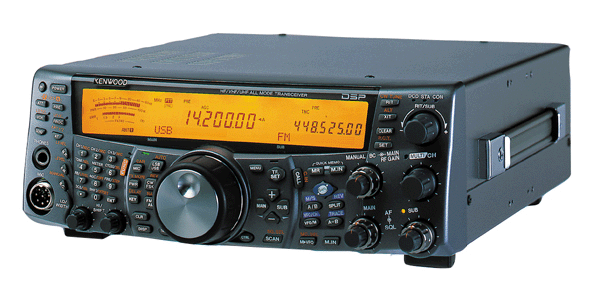
Also my Kenwood TS-2000 is limited to a maximum frequency of 60 MHz and with Band 1 TV closing down in Europe totally in the very near future I will need to explore what Band 2 VHF FM radio stations in the frequency range starting from 87.5 MHz can offer. I also have interest in frequencies between 60-87 MHz and want to leave my Meteor Scatter receiving system running 24H. I need my Kenwood TS-2000 for other amateur radio activity.
I've tried using my SDR FlexRadio 3000 but it doesn't appear sensitive enough on 55.250 MHz compared to my Kenwood TS-2000, results so far haven't been encouraging.
I have decided to experiment using a FUNcube Dongle Pro, which in theory can be used from 51.5 MHz - 1700 MHz (Rated from 64 MHz - 1700 MHz) all mode including SSB to turn my laptop PC into a dedicated radio receiver. I will use with SDR-Radio.com software for frequency control and SpectrumLab to analyse Meteor Scatter results. This will also permit me to experiment with the GRAVES Space Radar on 143.050 MHz too.

First impression of the FUNcube Dongler Pro was that it requires both extensive Radio and computer knowledge to setup properly. Took a little while to find the information online how to update the latest firmware (required for all features and software compatibility) and set it up for proper use. Tried SDR-Radio.com software as my preferred front end, as it is so very comprehensive, however I ran into a common problem of listening to a local Band II FM Broadcast Radio station on 92.5 MHz FM and the audio being very distorted.
Several hours later, by trial and error, I have tried the alternative HDSDR software front end and have little to no audio distortion when using96000 Hz in and 96000 Hz out audio settings via the soundcard. Will try again with SDR-Radio.com software on frequencies other than Broadcast FM which shouldn't cause overloading or exceed the audio bandwidth specification of the dongle.
I have in the Summer of 2012 abandoned using the FunCube Dongle and returned to my traditional analogue radio the Kenwood TS-2000.
2015
I now also have an Icom-7100 Transceiver which I have begun experimenting with for Radio Astronomy. Due to a PC HDD failure I lost all my SpectrumLab settings and realised that my setup instructions above are a bit lacking, so please find shown below some screen shots of my new configuration settings in case it helps others get setup too.
I am using Java FTP Scheduler Pro 2.1.4 to upload my captured images every 5 minutes
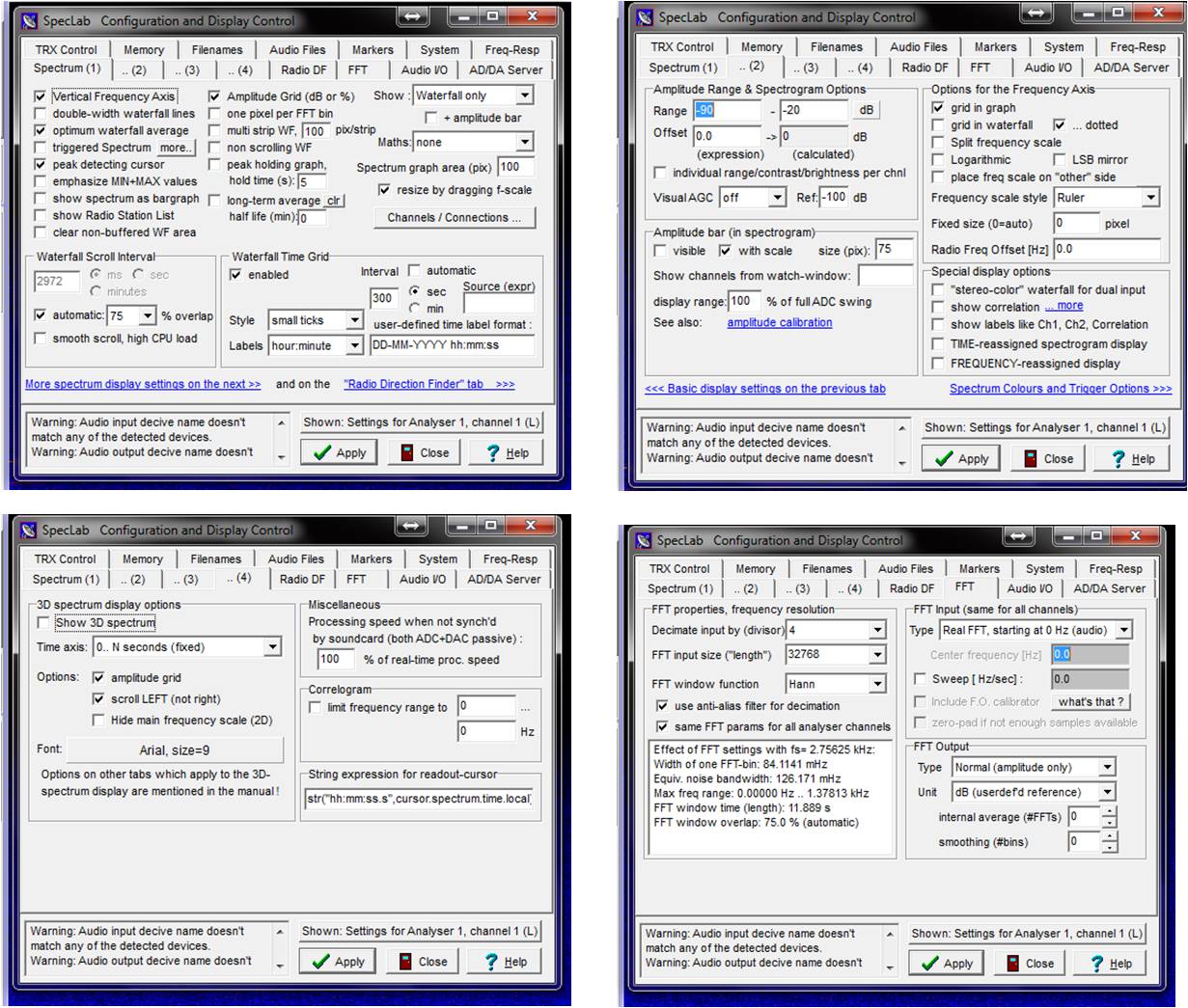

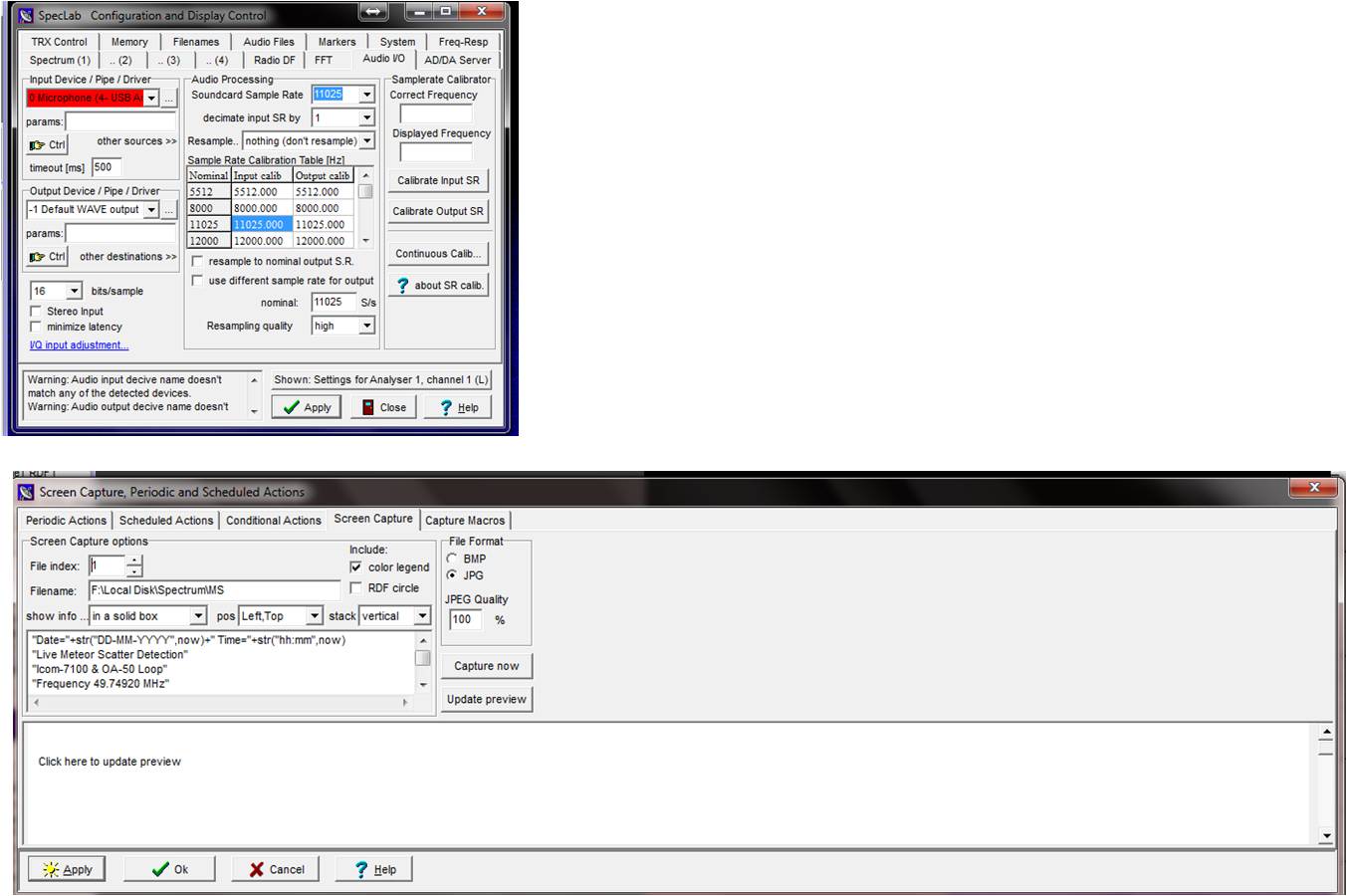
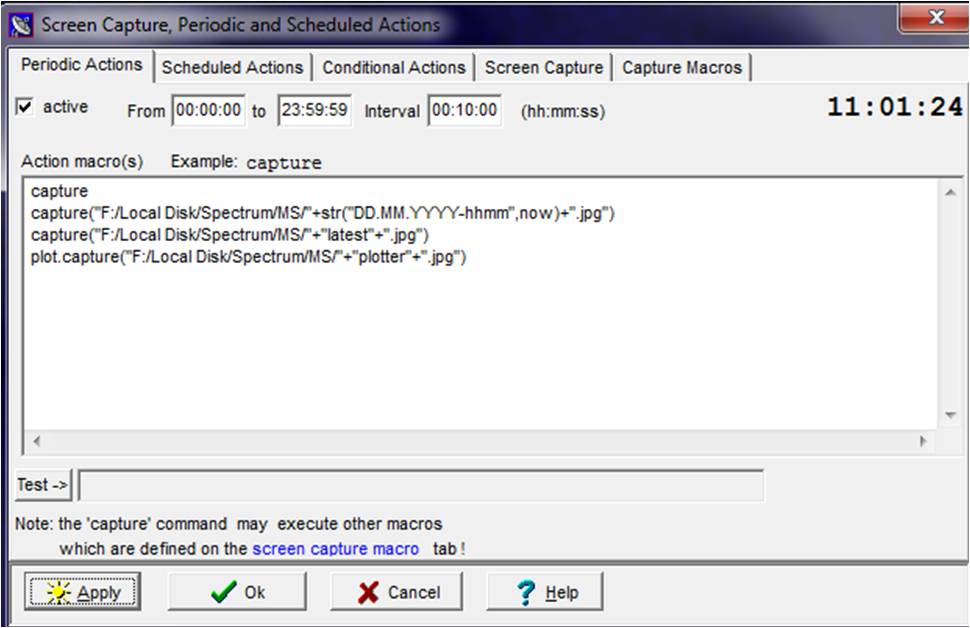
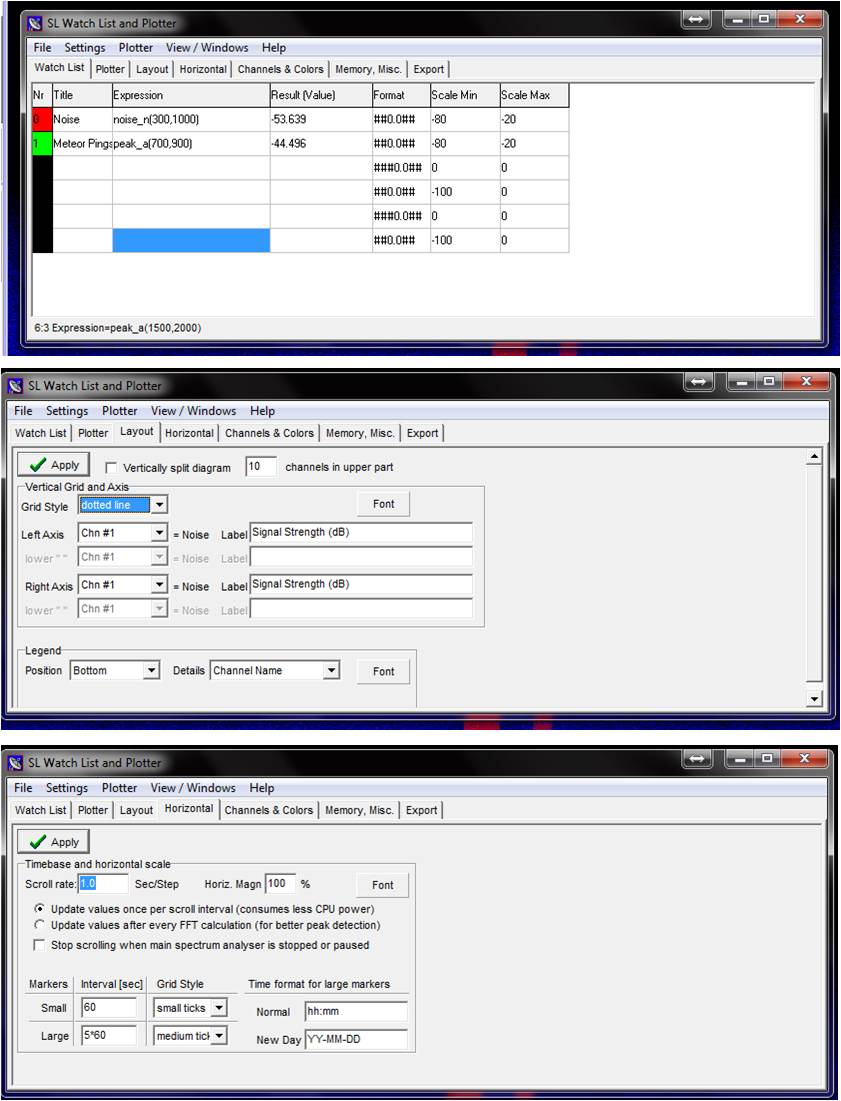
|
|
|
||
|
|
Send formatted VHF DX Cluster spot |
|
|
|
If you cannot see the full index shown on the left edge of your screen, please go to my main page at © Copyright G0ISW. Page last modified August 2024. All Rights Reserved.
|
|||


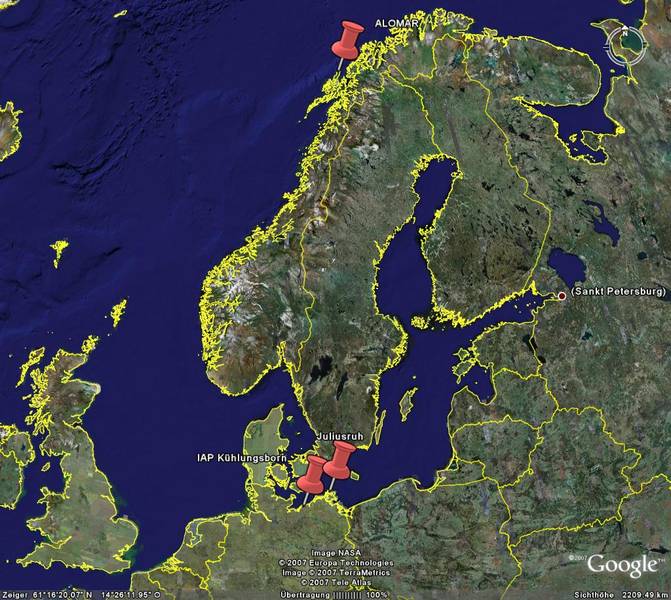

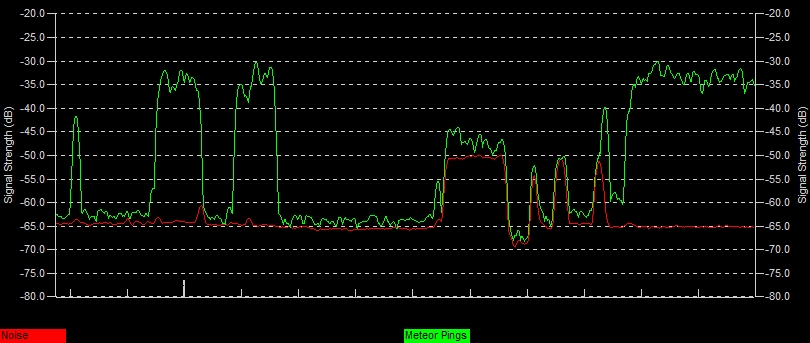


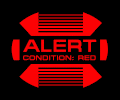



.jpg)
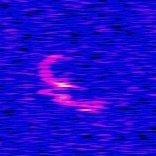
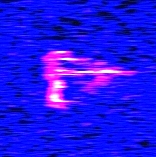
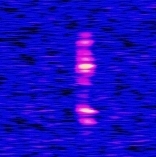
.jpg)
.jpg)
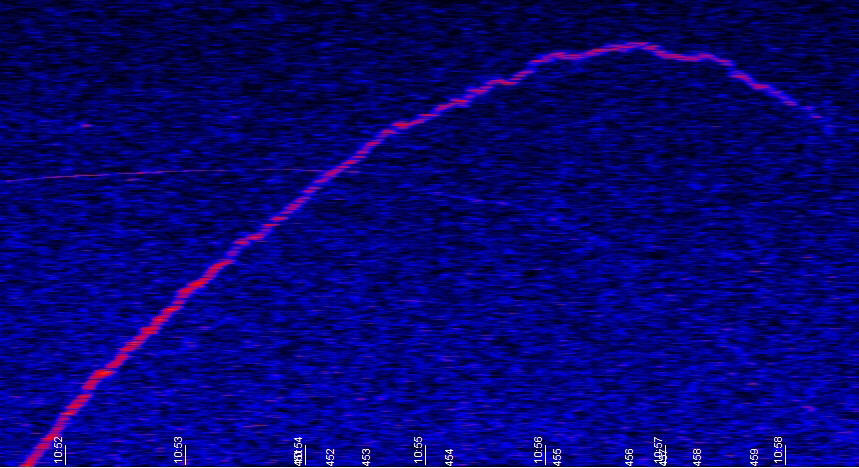
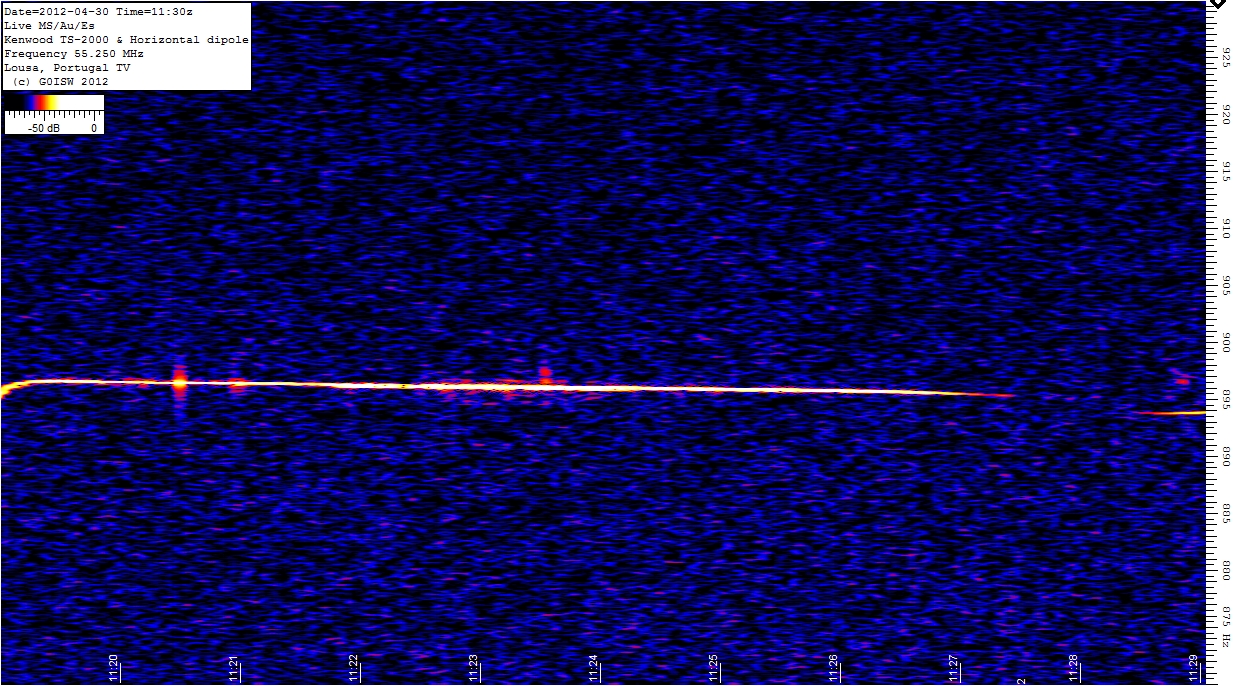
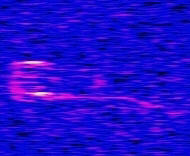
.jpg)
.jpg)
.jpg)
.jpg)